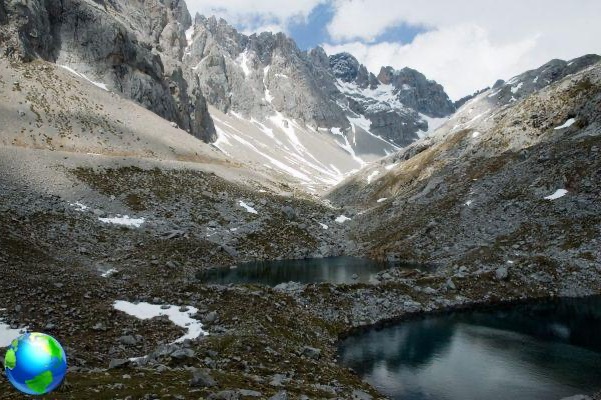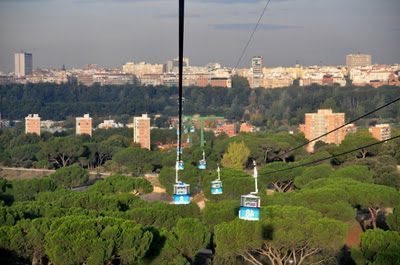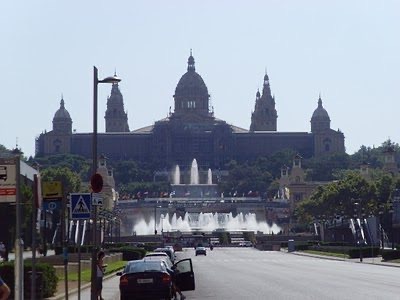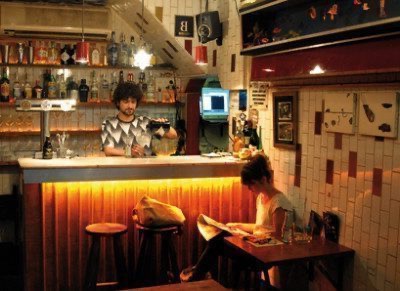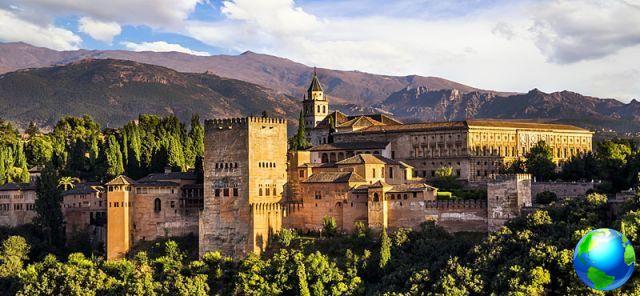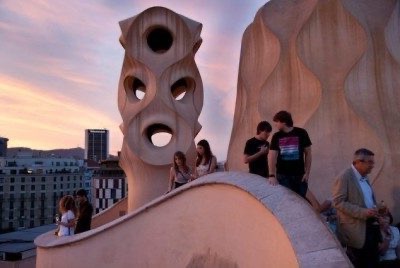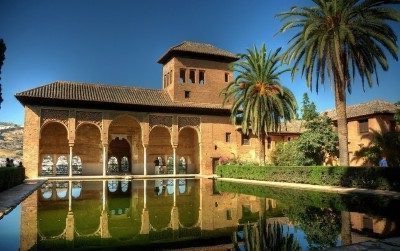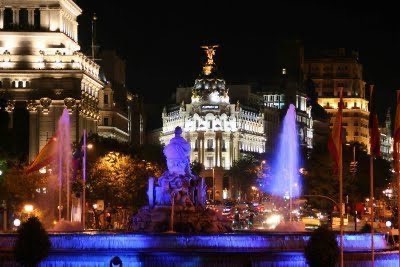



















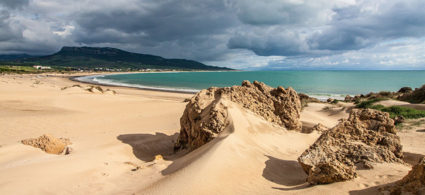


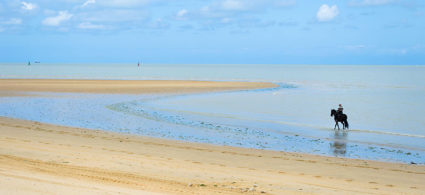



















The Region of Andalusia is made up of 8 Provinces - Almeria, Cadiz, Cordoba, Granada, Huelva, Jaen, Malaga and Seville - and is inhabited by seven million people, divided between coastal areas and large cities, although in the summer period many tourist centers even double or triple their own population.
The tourist variety of this area of Spain allows to satisfy the desires of all tourists.
There are wonderful cities rich in art and history that contain some of the most beautiful and fascinating places in Europe, you can immerse yourself in the clear sea of its windswept coasts and you can go to the discovery of unspoiled natural parks, all topped off with a vibrant nightlife, traditional festivals and a population always welcoming.
Province of Seville

The Province of Seville, not as popular as its capital, is located in the central part of Andalusia between the provinces of Cordoba, Cadiz, Malaga and Huelva and is especially known for its traditional gastronomy, among which tapas and gazpacho stand out.
The beautiful countryside of the Sierra Morena, the Guadalquivir valley and an imposing religious architecture characterize the territory of the province. East of Seville there are a number of small towns such as Carmona, Ecija, Estepa and Osuna with illustrious Baroque buildings and beautiful Mudejar style churches.
In the northern part of the province of Seville is the Sierra Norte Natural Park with charming villages and excellent hiking trails. South of the city of Seville extends a large plain with a somewhat monotonous landscape to the interesting towns of Lebrija and Utrera.
Province of Malaga

The Province of Malaga is the land of the wonderful beaches of the Costa del Sol with its 160 kilometers of coastline bathed by the Mediterranean Sea, and is also famous for the hospitality of its historic cities and the natural beauty of its interior.
The capital Malaga is one of the most lively and culturally active cities, thanks to the presence of numerous museums, such as the Pablo Picasso museum, and is one of the most popular destinations for young tourists looking for fun. In the interior of the province of Malaga, also known as the European capital of golf, are the historic cities of Ronda and Antequera, surrounded by typical villages of white houses on top of a hill, where you can relax in contact with nature.
Granada Province

The center of the province of Granada is, of course, its capital rich in history and important monuments, such as the famous Alhambra. But the city of Granada is also a lively cultural center and very popular with young people looking for fun.
In addition to Granada, this province also has other wonderful cities such as those of the hot Costa Tropical, the limited coastal area of the province, the green valleys of the Alpujarras and the snow-capped Sierra Nevada, the highest mountain range in Spain with some of the highest peaks in Europe such as the Mulhacen, which reaches 3 481 meters above sea level, the Veleta, with 3470 meters.
In the northern part of the province of Granada is an extensive plateau known as the Altiplano de Granada. This land rich in contrasts, with areas of arid plains a few kilometers from the Mediterranean scrub forests, is a protected area and includes the natural parks of the Sierra da Baza and the Sierra de Castril.
Many ancient traditions and festivals are celebrated every year in the villages scattered throughout the province of Granada. One of the most popular festivals is the Fiesta del Cascamorras that takes place in early September in the streets of the town of Baza.
Huéscar is a little known area of the region but full of beautiful villages such as Castillejar, Castril, Galera, Huéscar and Orce, to name a few.
province of cordoba

The province of Cordoba is a land rich in cultivated mountains and in its center is the ancient capital of Al-Andalus, built on the banks of the Guadalquivir river, famous for its rich monumental heritage and for being a modern and lively city.
Around the capital there are numerous rural villages where life goes on peacefully according to the most classical Andalusian customs and white villages full of baroque churches and Moorish castles.
The river crosses the provincial territory from east to west defining two distinct areas: to the north is the Sierra Morena and to the south the agricultural areas and the landscape dominated by vineyards and olive groves that characterize the landscape. Do not miss the natural park of the Sierra de Hornachuelos.
Cordoba also has a typical inland gastronomy, with products such as Los Pedroches ham, white wine and olive oil, and characteristic recipes such as oxtail and salmorejo.
Cordoba is easy to reach: Seville airport and Malaga airport are only 40 minutes away by car. In addition, the Ave, Spain's high-speed rail network, and the road network connect it conveniently with the rest of the country.
Province of Cadiz

The Province of Cadiz is an incredible land, rich in history, unspoiled landscapes, cosmopolitan cities, internationally renowned resorts, passions and opportunities for entertainment. Straddling the province of Huelva, the province of Seville, the province of Malaga, the Atlantic Ocean and the Mediterranean Sea, with the peninsula of Gibraltar, the Cadiz territory is a mecca for windsurfers and fascinates the visitor with the beaches of the Costa de la Luz and the beautiful white villages, among which do not miss Arcos de la Frontera, Setenil and Zahara de la Sierra.
The city of Cadiz, one of the oldest cities in Europe, is the cultural center of the whole province, and together with Jerez de la Frontera is part of the triangle of sherry, symbol of the passion of flamenco, horses and wine. The old town is located on a peninsula crossed by narrow streets with small squares and is dominated by the golden dome of the cathedral of Cadiz.
To visit the natural park of the Sierra de Grazalema, Tarifa and its pristine beaches, such as Los Caños de Meca, Zahora, La Barrosa and Bolonia, and the Doñana National Park. North of Cadiz are the beautiful coastal towns of Chipiona, Sanlucar de Barrameda and El Puerto de Santa Maria.
Festivals are of great importance in the province of Cadiz, famous for its characteristic horse races on the beach of Sanlucar de Barrameda, the Carnival of Cadiz and the elegant Horse Fair of Jerez de la Frontera.
Province of Jaén

The province of Jaén is located north of Granada, in the northwestern part of Andalusia, and borders the Region of Castilla-La Mancha. It is a land rich in olive groves that produce one of the best olive oils in the world and between its rolling hills and the mountains of the wonderful Cazorla Natural Park stand the cities of Jaén, Úbeda and Baeza, small architectural jewels adorned with beautiful buildings Renaissance paintings by the famous Spanish architect Andrés de Vandelvira.
This corner of the Spanish inland of the Andalusia Region is still immune to mass tourism and you can discover and appreciate the ancient local customs, unspoiled landscapes and traditional cuisine, mainly based on gambling. Don't hesitate to stop for a refreshment in the bars where they serve free tapas to accompany the beer.
province of almeria

With its more than 200 kilometers of wild coastline, the province of Almeria, in the extreme southeast of Spain, offers landscapes of incomparable beauty to every visitor. In the surroundings of the Cabo de Gata-Nija Park you will find extensive sandy beaches and hidden coves bathed by the warm waters of the Mediterranean.
Inland, the province of Almeria is so arid that it looks like a lunar landscape with low, arid mountains. Thanks to the particularity of its landscape, the interior has become the setting for the development of a large film industry, for a handful of dollars, most of Lawrence of Arabia and dozens of other spaghetti westerns were filmed here. Also near Tabernas are the Mini Hollywood theme park, the Texas-Hollywood and the Western Leone.
Don't miss the city of Almeria, the cave paintings of the Cueva de los Letreros in the Sierra Maria-Los Velez, Los Millares, the largest Bronze Age settlement in Europe, and the Phoenician settlement of Villaricos and the east coast of the provincial capital with its rocks overlooking the sea.
The warm period begins well before Easter and continues until the end of November, making it an ideal tourist destination all year round.
Province of Huelva

In the western part of Andalusia, between the province of Seville and Portugal, is the Province of Huelva, famous above all for its wonderful sandy beaches bathed by the Atlantic Ocean that form the tourist Costa de la Luz. We are talking about kilometers of unspoiled and often deserted golden sand beaches.
In this magnificent sunny land dotted with pines and junipers is also the Doñana National Park, a large protected area inscribed on the World Heritage List of UNESCO, consisting of dunes, marshes, salt marshes, pine forests and freshwater lagoons, where you can find a variety of wildlife, especially birds.
For lovers of hiking, in the northern part of the province of Huelva are the town of Aracena and its natural park while near the provincial capital you can visit Moguer, Palos de la Frontera and Mazagon, the fascinating Lugares Colombinos, the places that tell the story of Columbus' discovery of America.
Among the various parts of special interest is the Pilgrimage of El Rocio, declared of International Tourist Interest, which is celebrated on June 1 since 1653.





